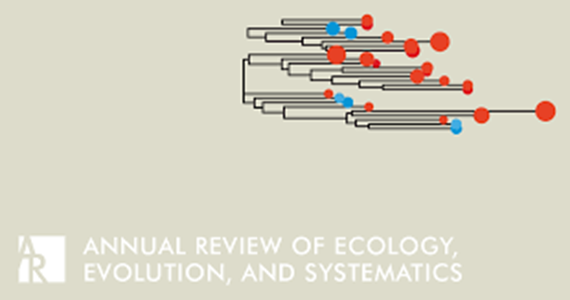从昆虫到青蛙,卵苗的繁殖对种群规模有持久的影响
IF 11.2
1区 生物学
Q1 ECOLOGY
Annual Review of Ecology, Evolution, and Systematics
Pub Date : 2021-01-01
DOI:10.1146/ANNUREV-ECOLSYS-122420-102909
引用次数: 5
摘要
了解具有复杂生命周期的生物体的种群规模是具有挑战性的,因为种群规模的限制可能发生在任何阶段或过渡时期。我们扩展了一个概念框架,以探索成功产卵的数量是否决定了居住在海洋、淡水或陆地栖息地的昆虫、鱼类、两栖动物和蜗牛的后期密度。我们的综述提出了一些新的假设,这些假设提出了物种或环境的特征,这些特征造成了卵密度的空间变化,并预测了这种模式在随后的生命周期阶段何时保持。现有的数据虽然有限,但表明在适合产卵的栖息地缺乏的物种中,卵和随后的幼鱼密度之间可能存在持久的、强烈的联系。在某些环境中,对于某些物种来说,由于卵或幼崽的密度依赖损失,这些联系被削弱了。这种跨生态系统的比较对生态学的普遍性至关重要,但需要对物种生物学和自然历史有基于地点的理解。预计《生态、进化和分类学年度评论》第52卷的最终在线出版日期为2021年11月。修订后的估计数请参阅http://www.annualreviews.org/page/journal/pubdates。本文章由计算机程序翻译,如有差异,请以英文原文为准。
From Insects to Frogs, Egg–Juvenile Recruitment Can have Persistent Effects on Population Sizes
Understanding what regulates population sizes of organisms with complex life cycles is challenging because limits on population sizes can occur at any stage or transition. We extend a conceptual framework to explore whether numbers of successfully laid eggs determine densities of later stages in insects, fish, amphibians, and snails inhabiting marine, freshwater, or terrestrial habitats. Our review suggests novel hypotheses, which propose characteristics of species or environments that create spatial variation in egg densities and predict when such patterns are maintained throughout subsequent life-cycle stages. Existing data, although limited, suggest that persistent, strong associations between egg and subsequent juvenile densities are likely for species where suitable egg-laying habitat is in short supply. Those associations are weakened in some environments and for some species by density-dependent losses of eggs or hatchlings. Such cross-ecosystem comparisons are fundamental to generality in ecology but demand place-based understandings of species’ biology and natural history. Expected final online publication date for the Annual Review of Ecology, Evolution, and Systematics, Volume 52 is November 2021. Please see http://www.annualreviews.org/page/journal/pubdates for revised estimates.
求助全文
通过发布文献求助,成功后即可免费获取论文全文。
去求助
来源期刊
CiteScore
19.90
自引率
1.70%
发文量
21
期刊介绍:
The Annual Review of Ecology, Evolution, and Systematics is a scholarly publication that has been in circulation since 1970. It focuses on important advancements in the areas of ecology, evolutionary biology, and systematics, with relevance to all forms of life on Earth. The journal features essay reviews that encompass various topics such as phylogeny, speciation, molecular evolution, behavior, evolutionary physiology, population dynamics, ecosystem processes, and applications in invasion biology, conservation, and environmental management. Recently, the current volume of the journal transitioned from a subscription-based model to open access through the Annual Reviews' Subscribe to Open program. Consequently, all articles published in the current volume are now available under a CC BY license.

 求助内容:
求助内容: 应助结果提醒方式:
应助结果提醒方式:


